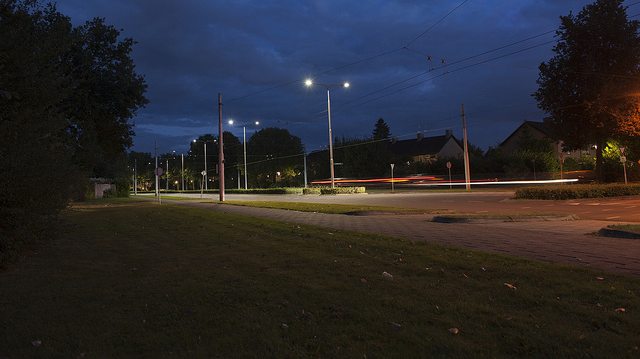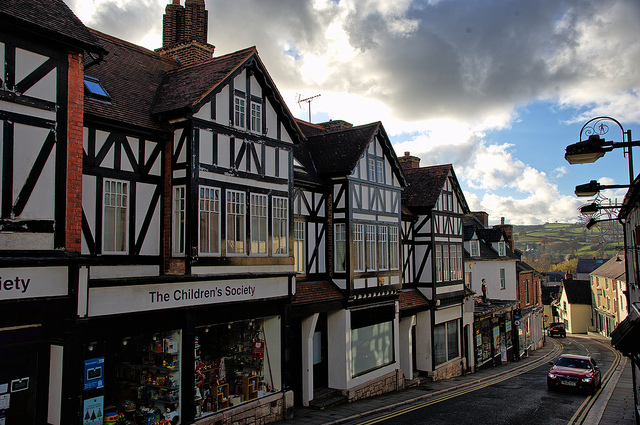TAG | led street light

The EU Streetlight-EPC initiative aims to use energy performance contracting to stimulate roadlighting refurbishment
Lux Reports: The EU-backed Streetlight-EPC initiative aims to stimulate use of energy performance contracting (EPC) to drive take-up of energy-efficient streelighting refurbishment. The project hopes to get 36 EPC projects up and running in nine regions across the EU.
Most European regions have not yet seen a significant take-up of EPC, which can be a good funding mechanism in streetlighting refurbishment, where there are high energy costs and huge potential for savings. Apart from legal barriers, this can be attributed to the lack of understanding and trust in EPC and the absence of experienced energy service companies (ESCOs) and organisations facilitating the EPC market.
In Europe, streetlighting consumes a significant amount of electricity: there are more than 56 million streetlighting luminaires in operation, with an estimated electricity consumption of 35 TWh. For municipalities with older, inefficient systems, streetlighting can account for 30-50% of their total electricity consumption. The recent market introduction of LED technology for streetlighting offers high savings with comparatively short payback times.
The Streetlight-EPC project creates demand and supply for EPC projects by setting up regional EPC facilitation services. These services provide comprehensive support to both municipalities and SMEs as potential ESCOs. The nine regions in the scheme are Austria, Croatia, Czech Republic, Poland, Ireland, Sweden, Slovenia, Macedonia and Spain.
The project aims to implement 36 EPC projects, triggering investments worth €49 million, achieving annual savings of 32,100 MWh and €4.8 million. It aims to help 18 SMEs to become ESCOs.
A scheme in Palencia, Spain is a pioneer project. The town has a population of 81,000 and has 11,000 lighting points. High-pressure sodium and mercury lamps were being used, frequently with low efficiency and insufficient colour rendering. As a first step, 3,139 luminaires were changed to LED and a dimming control system was installed. The 12-year EPC contract will guarantee energy savings of 75%, with total savings of €2 million.
The Streetlight-EPC project started on 1 April 2014 and will run until 31 March 2017.
Visit www.novelenergylighting.com to explore your LED streetlighting needs. Or call us on 0208-540-8287.
EPC · led lighting · led street light · led street lighting · led streetlight · Novel Energy Lighting
18
Osram safeguards LED road luminaires with high overvoltage protection
Comments off · Posted by admin in LED
The power consumption benefits from LED street lighting could be compromised by the threat of voltage peaks from lightning strikes.

Lightning density in Europe differs significantly from region to region. Mandatory image source specification: © British Crown copyright 2015, the Met Office
Cities like Milan and Turin are expecting at least 50 percent less electricity consumption thanks to recent transformations to LED and Optotronic control devices from Osram. However, lightning strikes can risk the economic advantages as LED modules run with lower voltage levels and could be damaged from overvoltage. This danger has increased with the UN Climate Council identifying increasing levels of lightning worldwide in its fifth assessment report (IPCC14). Around 10 percent of the several million lightning strikes occurring each day impact on the ground, thereby causing voltage peaks. To effectively protect LED modules assembled in road luminaires, the Osram Optotronic 4DIM features overvoltage protection of 8 kilovolts as standard.
Levels of lightning density in Europe are high in summer, particularly in July and August, and with large regional differences – the U.K. Meteorological Office recorded between just 0.25 and over 20 strikes per square kilometre in 2014. In general it can also be said about distribution across Europe that lightning in the South East occurs more frequently than in the North or North West, and in towns and cities more than in rural areas
As a consequence, the new generation of Osram “Optotronic 4DIM” electronic control units feature protection of up to 8 kilovolts between mains supply and ground in protection classes I and II. This means that lightning can strike an area of up to 200 metres from a luminaire mast without the LED module being damaged.
Compared to the common 4 kilovolt overvoltage protection with control units of other manufacturers, this means that with an example mast spacing of 30 metres, twice the quantity of road luminaires survive lightning impacts without damage. In many European regions the high level of overvoltage protection with Optotronic 4DIM units is usually sufficient to provide long term protection. However in regions with high lightning density levels though, it is recommended as a precaution to implement supplementary protective measures, for example in the main distribution frames and junction boxes of road lighting systems.
Osram as the first manufacturer made this 8 kilovolt protection possible with a so-called EQUI connection (equipotential) for protection class II applications, enabling various components of the lighting system to exhibit the same electric potential, thus significantly reducing the occurrence of overvoltage on the LED module.
Optotronic control units also reliably protected from voltage peaks from two other hazardous sources: – those with up to 6 kilovolts due to load changes or switching commands in the power supply grid (often generated several dozens of times per year), and from electrostatic discharge (ESD) occurring with for example maintenance work, if no ESD protective measures exist.
Overvoltage though does not automatically mean the immediate failure of an LED module, but can cause premature ageing and therefore shorter operating periods; this has consequences for the operator in terms of costs. Normally, LED solutions have low failure rates and achieve up to 100,000 operating hours.
Novel Energy Lighting supplies all Osram LED products. Talk to us today about your requirements for LED lighting, and LED street lighting. Tel: 0208-540-8287, Email: sales@novelenergylighting.com
led lamp · led lighting · led street light · led streetlights · Novel Energy Lighting · osram · osram led · osram street lighting · street lighting
28
Free money buys LED streetlights for energy savings in Wales
Comments off · Posted by admin in LED
Zeroing in: Old streetlights in towns like Ruthin could soon give way to modern LED luminaries, as Denbighshire takes advantage of a zero percent interest loan from the UK government.
energy efficient financing · led financing · led lighting · led street light · led streetlighting · Novel Energy Lighting


